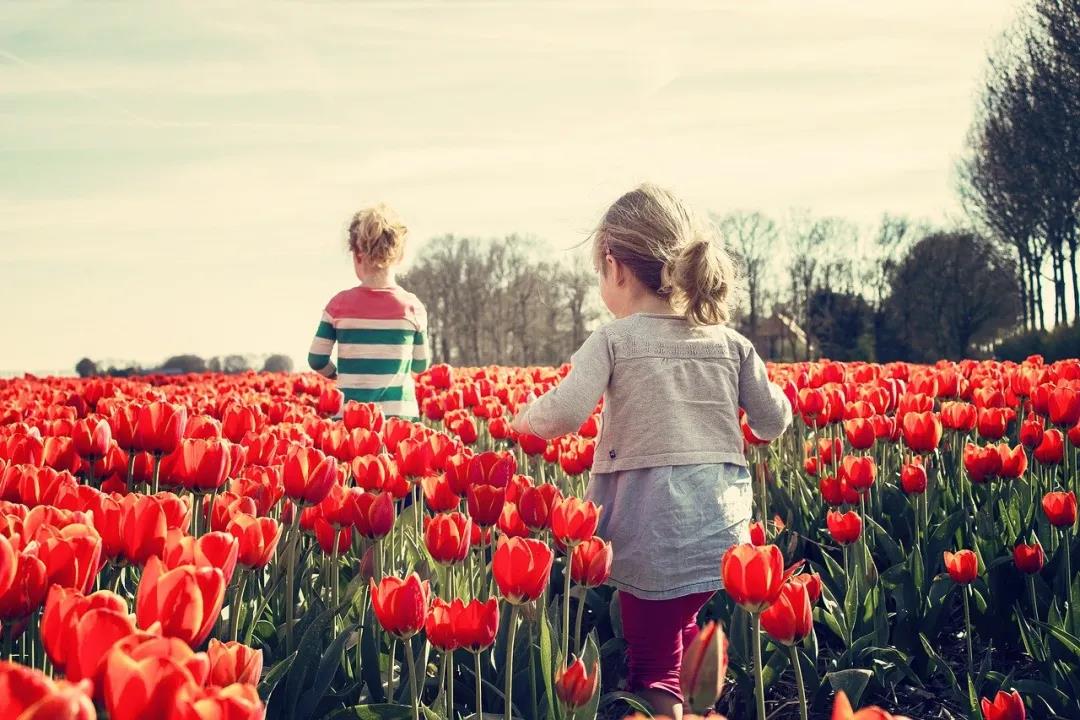 Photo | Pixabay
In this article, we mainly introduce the basic situation of the Dutch market. Including: geographic location, major cities, population status, ethnicity, major festivals, natural resources, major industries, GDP, foreign exchange reserves, employment status, prices, corporate income tax, personal tax rates, etc.
Introduction
The Kingdom of the Netherlands (Dutch: Koninkrijk der Nederlanden), referred to as "Netherlands". It is located in the northwest of Europe, bordering Germany and Belgium. It is a constitutional monarchy complex composed of the four constituent states of the Netherlands, Aruba, Curaçao and St. Martin of the Netherlands.
Photo | Pixabay
In this article, we mainly introduce the basic situation of the Dutch market. Including: geographic location, major cities, population status, ethnicity, major festivals, natural resources, major industries, GDP, foreign exchange reserves, employment status, prices, corporate income tax, personal tax rates, etc.
Introduction
The Kingdom of the Netherlands (Dutch: Koninkrijk der Nederlanden), referred to as "Netherlands". It is located in the northwest of Europe, bordering Germany and Belgium. It is a constitutional monarchy complex composed of the four constituent states of the Netherlands, Aruba, Curaçao and St. Martin of the Netherlands.
The Netherlands is a highly developed capitalist country, one of the founding countries of the European Union and NATO, and a member of the Schengen Convention, the United Nations, the World Trade Organization and other international organizations
Capital
Amsterdam, the capital and largest city of the Netherlands, has a population of approximately 870,000. Located in the western province of North Holland, a world-famous international metropolis.
Main City
Amsterdam
Amsterdam is the capital of the Netherlands, the largest city in the Netherlands and the second largest port. The population is 870,000. A city is located in the northwest of the Netherlands, on the edge of Lake Essel, and is connected to the North Sea by the North Sea Canal in the west. A city has a history of more than 700 years. It was originally a small fishing village at the mouth of the Amstel River. According to legend, around 1270, people built a dam here, and “Amsterdam” got its name from this, meaning “Amstel River Dam”. In the first half of the seventeenth century, with the growth of the Dutch economy, the city developed into the largest port, one of the most prosperous commercial and financial centers in Europe at that time. A city’s diamond processing and woolen manufacturing industries are well-known all over the world, and it is also the location of the famous East India Company and West India Company.
A city canal crisscross. 102 canals with a total length of 150 kilometers divide the city into more than 90 islands, which are connected by 1,286 traditional arch bridges and modern opening and closing bridges, and 16 sluices are used to adjust the water level. It is known as the "Venice of the North". On the canal, there are more than 3000 "boat houses" dotted with it, becoming a scene of the city.
A city is still the most important industrial, commercial and financial center in the Netherlands. There are traditional industries such as shipbuilding, food processing, clothing processing, and printing, as well as modern economic sectors such as the chemical industry and electronics industry, as well as several important national scientific research institutions. A city is also an important cultural and artistic center in the Netherlands. There is a national museum that houses the world-famous oil painting master Rembrandt and others handed down works, as well as the painting museum of the world-famous painter Van Gogh in modern times, and has the largest art history library in the Netherlands, the Asian art gallery and the Dutch history exhibition Pavilion etc. There are more than 40 museums and exhibition halls in the city. The 1928 World Olympic Games was held here.
The Hague
The Hague is located on the west coast of the Netherlands, 3 kilometers away from the North Sea and has a population of 458,000. It is the third largest city in the Netherlands and the seat of the Dutch government, parliament and foreign missions.
At present, the Hague is dominated by light industry. The main industries include papermaking, printing, publishing, clothing, furniture, electronics, medicine, food processing, etc. Many major banks and companies are headquartered in The Hague.
The Hague is a well-known cultural center in the Netherlands. There are academic institutions such as the International Law School and the Royal Academy of Plastic Arts. It is also a tourist attraction. The nearby Scheveningen is a famous beach. The Peace Palace in the city is the office of the International Court of Justice. The office of the Queen of the Netherlands is located in the city center and has a palace on the outskirts of the city.
Rotterdam
Rotterdam is located on the banks of the New Maas River in the Rhine Estuary region in the southwest of the Netherlands, 28 kilometers from the North Sea. The city is now the second largest city in the Netherlands with a population of 600,000.
The Port of Rotterdam has been the world's largest port since 1961, and has been at the top of the list for 42 years. Deer-born port has developed advanced industries such as oil refining, chemical industry, and shipbuilding, and has advanced port construction and management experience. Some large Dutch companies, such as Unilever, Shell, etc., have their headquarters and branches here. The city holds boat festivals and marathons every year, attracting many tourists. The high tower "European Mast" built in 1960 to welcome the Rotterdam International Flower Show is 185 meters high, with a bird's eye view of the city.
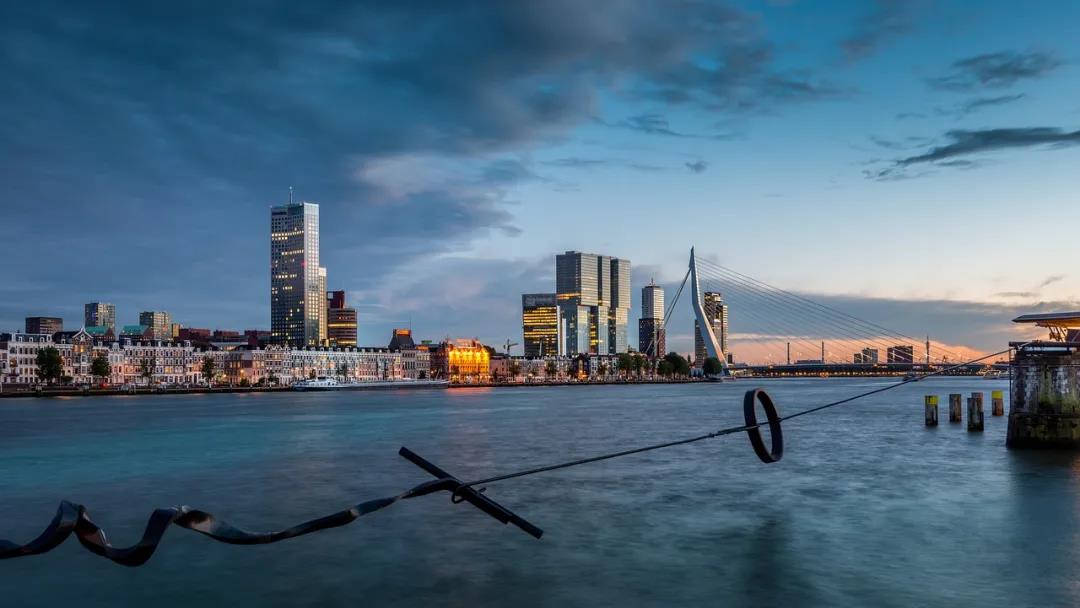
Port of Rotterdam, Photo | Pixabay
Jet Lag
There is a 7-hour difference between Dutch time and Beijing time, but the time difference between Holland and China is different in summer, and there will be a 6-hour time difference when summer time is implemented in summer. That is to say, in summer, the difference between the two places is six hours; at other times, the difference is seven hours.
Population & Ethnicity
The total population is 17.4 million (Netherlands Statistics Office, 2020).
76.9% are Dutch, in addition to the Fris, Morocco, Turkey, and Suriname are the larger minorities, and the Chinese have become the fourth largest minority.
Language
The official language is Dutch, and Frisian is spoken in Friesland.
Main Holiday
New Year (January 1);
Good Friday (the Friday before Easter);
Easter (the first Sunday after the full moon of the vernal equinox);
Easter Monday (the first day after Easter Sunday);
Queen of the Netherlands Day (April 30);
National Memorial Day/Memorial Day/Peace Memorial Day (May 4);
Liberation Day (May 5);
Windmill Festival (the second Saturday in May);
Ascension Day (40th day after Easter);
Pentecost / Pentecost / Harvest (50th day after Easter);
Saint Nicholas Day (December 6);
Christmas Eve (December 24);
Christmas (December 25);
Carnival: In the modern era, although the connection between carnival and religion has gradually disappeared, its date is still at the beginning of the Christian festival Lent.

Dutch traditional clothing, Photo | Pixabay
Natural Resources
The natural resources of the Netherlands are relatively poor. Only natural gas and oil reserves are relatively abundant (the total proven natural gas reserves in 2012 are about 1,930 billion cubic meters), and there is a certain amount of coal. The development of natural gas in the Netherlands is second only to Russia, the United States and Canada, ranking fourth in the world. In 2016, the amount of natural gas produced was 47.7 billion cubic meters. At the end of 2012, oil was discovered in the North Sea to which it belongs.
Main Industry
Industry
Industry is developed, accounting for 17.9% of GDP. The main industrial sectors include food processing, petrochemicals, metallurgy, machinery manufacturing, electronics, steel, shipbuilding, printing, and diamond processing. It is one of the major shipbuilding countries in the world. Rotterdam is the largest oil refining center in Europe. Since the 1980s, the Dutch government has actively encouraged the development of new industries, paying special attention to the development of high-tech industries such as space, microelectronics and life sciences.
Agriculture
Agriculture is highly intensive and mechanized, and it ranks as the second largest exporter of agricultural products in the world. In 2019, the total export of agricultural products was 94.5 billion Euros, a year-on-year increase of 4.6%. The world's largest seed exporter. The production level of dairy products ranks among the top in the world, with a per capita milk production of 50 tons, which is 132 times the world average. Flower production and export rank first in the world.
Service Industry
The service industry is a pillar industry of the national economy, accounting for 70% of GDP, mainly concentrated in logistics, banking, insurance, tourism and legal industries.
Economy is highly dependent on trade, recession is inevitable
According to the information published by the National Bureau of Statistics of the Netherlands, the actual economic growth rate in 2019 was 1.7% year-on-year, and the completed nominal GDP was 810.704 billion euros, equivalent to 0.9 trillion US dollars (907.583 billion US dollars). Throughout the year, the permanent population of the Netherlands was close to 17.4 million, and its per capita GDP exceeded US$52,000, leading the way among developed countries.
 Dutch GDP growth trend chart over the years | TRADING ECONOMICS
In 2019, the total value of imports and exports of the Netherlands is close to 1.35 trillion US dollars. According to the calculation rules of foreign trade dependence, the Netherlands’ foreign trade dependence was as high as 148% in 2019.
Dutch GDP growth trend chart over the years | TRADING ECONOMICS
In 2019, the total value of imports and exports of the Netherlands is close to 1.35 trillion US dollars. According to the calculation rules of foreign trade dependence, the Netherlands’ foreign trade dependence was as high as 148% in 2019.
The Netherlands Bureau of Economic Analysis: The Netherlands is inevitable in recession, and GDP is expected to fall by 1.2% in 2020. If the blockade caused by the epidemic continues for more than 6 months, GDP will fall by 7.7%
Rapid growth of foreign exchange reserves
 Trends of Dutch foreign exchange reserves over the years | TRADING ECONOMICS
The Dutch foreign exchange reserves have grown significantly in recent years, and they have grown rapidly after falling to a trough in 2018.
Stable employment, low unemployment rate
Trends of Dutch foreign exchange reserves over the years | TRADING ECONOMICS
The Dutch foreign exchange reserves have grown significantly in recent years, and they have grown rapidly after falling to a trough in 2018.
Stable employment, low unemployment rate
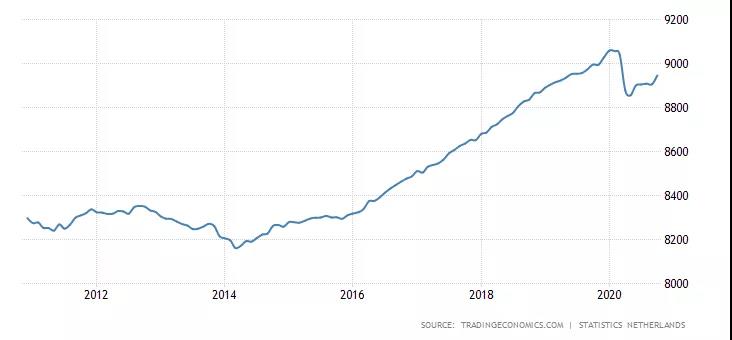 Trends in the employment population in the Netherlands over the years | TRADING ECONOMICS
Trends in the employment population in the Netherlands over the years | TRADING ECONOMICS
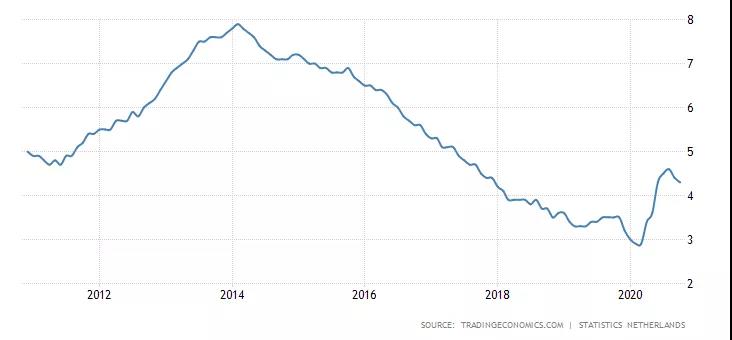
The unemployment rate trend in the Netherlands over the years | TRADING ECONOMICS
The unemployment rate in the Netherlands fell to 3.5% in 2019, making it the third lowest unemployment rate in the EU. In 2020, affected by the epidemic, the overall unemployment rate is expected to rise to 5.8%.
Prices have continued to rise in recent years, and inflation has continued to fall
From 2011 to 2020, the growth of the Dutch consumer price index CPI accelerated, and prices continued to rise.
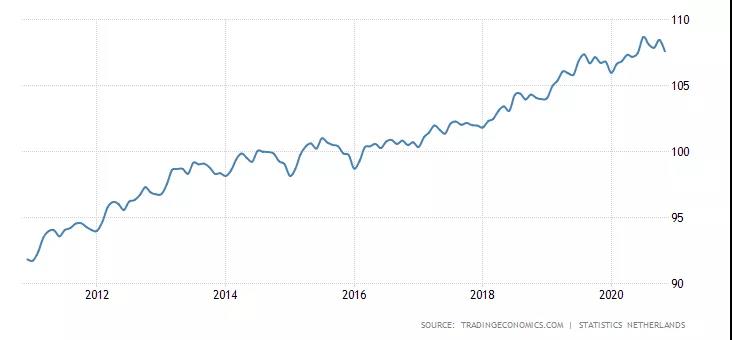
CPI trends in the Netherlands over the years | TRADING ECONOMICS
From 2011 to 2020, the Dutch inflation rate fluctuated significantly. Since 2019, it has continued to fall, and the economic growth rate has dropped significantly.
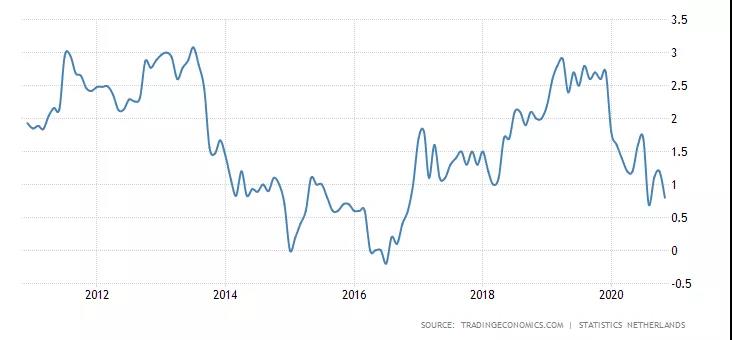
Inflation rate trends in the Netherlands over the years | TRADING ECONOMICS
Corporate income tax 25%
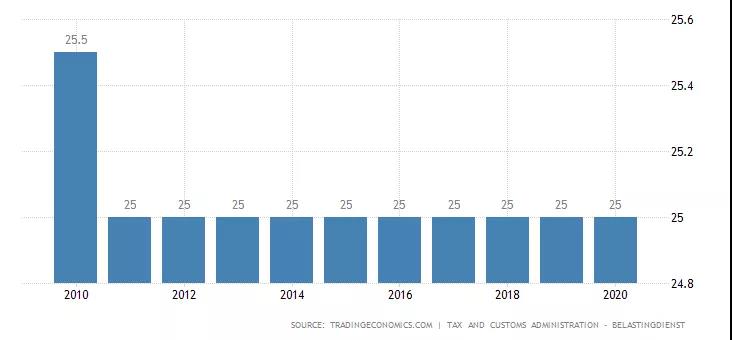
Dutch corporate income tax trends over the years | TRADING ECONOMICS
In 2020, the Dutch corporate income tax rate is 25%.
Personal income tax 49.5%
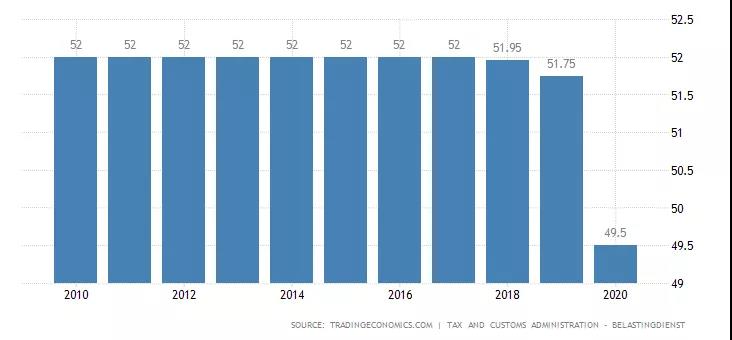
Personal Income Tax trends in the Netherlands over the years | TRADING ECONOMICS
In 2020, the Dutch personal income tax rate is 49.5%.











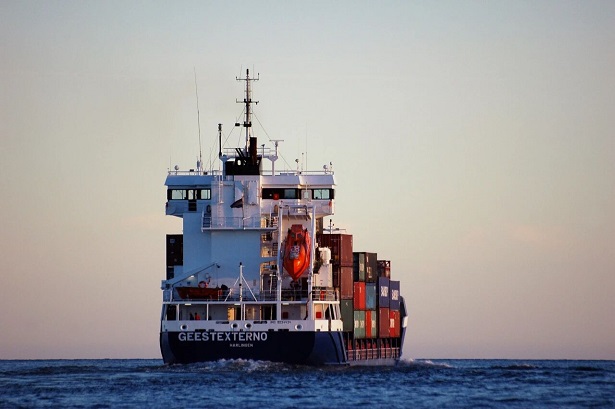 China's Import and Export Data
China's Import and Export Data
 Latest Progress of China-Europe Freight Trains
Latest Progress of China-Europe Freight Trains
 2025 Chinese military parade
2025 Chinese military parade